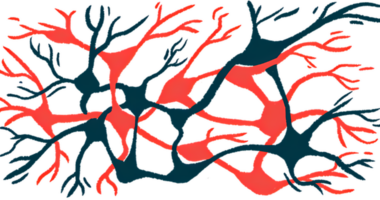Inflammatory protein ASC may be therapeutic target in Parkinson’s
ASC protein found to speed toxic spread of alpha-synuclein in brain

An inflammatory protein called ASC was found in laboratory models to help accelerate the toxic spread of alpha-synuclein through the brain in Parkinson’s disease, implying that this protein may be a useful disease target, a new study suggests.
“Importantly, … the ASC protein presents as a promising target,” the researchers wrote.
Their findings showed that “ASC specks exacerbate neuronal [alpha]‑synuclein” disease development and play a part in “a vicious cycle” of inflammation in the brain, according to the team.
The study, “ASC specks exacerbate [alpha]‑synuclein pathology via amplifying NLRP3 inflammasome activities,” was published in Journal of Neuroinflammation. The work was funded by the National Natural Science Foundation of China and the Key Research and Development Program of Zhejiang Province.
Investigating role of ASC protein in spread of toxic alpha-synuclein
Parkinson’s is characterized by the buildup of toxic aggregates or clumps of alpha-synuclein protein in the brain. These clumps can spread in a prion-like fashion, with aggregates in one cell triggering more aggregates to form in its neighbors; all result from protein misfolding.
While the exact causes of Parkinson’s disease remain unclear, it’s thought that the toxic spread of these aggregates through the brain plays a key role.
The protein ASC in turn plays a key role in the activation of a molecular complex called the NLRP3 inflammasome. This complex helps to detect threats inside the cell, such as infecting viruses. When a threat is detected, the various components of the inflammasome assemble and activate, triggering the release of pro-inflammatory signaling molecules to sound the alarm. Prior research has suggested that the activation of the NLRP3 inflammasome may help drive the toxic spread of alpha-synuclein, but the molecular details remain incompletely understood.
ASC specifically acts as a molecular adaptor, helping to hold the different components of the inflammasome together. But that’s not the only job of this protein: After the inflammasome activates, ASC can be released outside the cell, where it connects with other molecules to form structures called ASC specks. These specks act as danger signals of a sort, letting nearby cells know that something is wrong.
Now, a team of scientists in China conducted a series of experiments to investigate whether ASC specks influenced the spread of alpha-synuclein in Parkinson’s models.
The researchers first performed a battery of tests using microglia, the resident immune cell of the brain. The findings showed that treatment with clumped alpha-synuclein led to activation of the NLRP3 inflammasome and the release of ASC specks, as has been reported previously.
Further, the scientists showed that inflammasome activation was amplified when cells were co-treated with both alpha-synuclein and ASC specks, compared with the alpha-synuclein protein alone. Reducing ASC levels in cells also led to less inflammasome activation in response to alpha-synuclein.
The team next conducted tests using a mouse model in which toxic alpha-synuclein spreading was induced by injecting a small amount of the clumped protein into mice’s brains to essentially work as a seed.
These results showed that mice treated with ASC specks had substantially more toxic alpha-synuclein clumping compared with mice treated only with the alpha-synuclein seed. However, treatment with ASC specks alone, without the seed, did not induce alpha-synuclein clumping. This suggests that “ASC specks can only accelerate [alpha]-synuclein accumulation but not initiate it,” the researchers wrote.
These findings imply that targeting ASC is a promising therapeutic approach for [Parkinson’s].
In line with the increased spread of toxic alpha-synuclein, additional tests showed that administering ASC specks led to more brain cell death and poorer motor function in mice given the alpha-synuclein seed.
Collectively, these findings suggest that toxic alpha-synuclein leads to inflammasome activation, which triggers the formation of ASC specks, in turn leading to the further spread of toxic alpha-synuclein in what the team called a vicious cycle.
“These findings imply that targeting ASC is a promising therapeutic approach for” Parkinson’s, the researchers wrote.
US company developing treatment targeting ASC protein
A U.S.-based company, ZyVersa Therapeutics, is developing an experimental therapy called IC 100 that targets the ASC protein. IC 100 is an antibody designed to block inflammasome activation.
The new study “provides additional support for the therapeutic potential of ZyVersa’s proprietary monoclonal antibody Inflammasome ASC Inhibitor IC 100, in neurological diseases,” Stephen C. Glover, co-founder, chairman, CEO, and president of Zyversa, said in a company press release.
Glover added that, in preclinical studies, the therapy was found to “demonstrate reduced inflammatory activity and/or improved outcomes in, age-related inflammation, Alzheimer’s disease, multiple sclerosis, spinal cord injury, and two different models of brain injury.”








